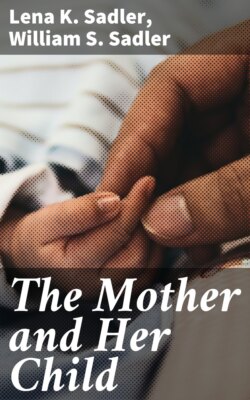Читать книгу The Mother and Her Child - Lena K. Sadler - Страница 22
На сайте Литреса книга снята с продажи.
THE PROCESS OF FERTILIZATION
ОглавлениеJust as within the body of "Mother Morning Glory" (See Fig. 18) may be found the ovary or seed bed, so there are two wonderfully organized bodies about the size of large almonds found in the lower part of the female abdomen on either side of the uterus, and connected to it by two sensitive tubes. There ripens in one of these bodies each month a human baby-seed, which finds its way to the uterus through the little fallopian tube and is apparently lost in the debris of cells and mucus which, with the accompanying hemorrhage go to make up the menstrual flow. This continues from puberty to menopause, each gland alternatingly ripening its ovum, only to lose it in the periodical phenomenon of menstruation, which is seldom interrupted save by that still more wonderful phenomenon of conception.
At the time of conception, countless numbers of male germ-cells (sperms) are lost—only one out of the multitude of these perfectly formed sperms made up of the mosaics of hereditary depressors, determiners, and suppressors that so subtly dictate and determine the characteristics and qualifications of the on-coming individual—I repeat, only one of these wonderful sperms finds the waiting ovum (Fig. 1). In this search for the ovum, the sperm propels itself forward by means of its tail—for the male sperm in general appearance very much resembles the little pollywog of the rain barrel (Fig. 1).
The fateful meeting of the sperm and the ovum takes place usually in the upper end of one of the fallopian tubes. It is a wonderful occasion. The wide-awake, vibrating lifelike sperm plunges head first and bodily into the ovum. The tail, which has propelled this bundle of life through the many wanderings of its long and perilous journey, now no longer needed, drops off and is lost and forgotten. This union of the male and female sex cells is called "fertilization." There immediately follows the most complete blending of the two germ cells—one from the father and one from the mother—each with its peculiar individual, family, racial, and national characteristics. Here the combined determiners determine the color of the eyes, the characteristics of the hair, the texture of the skin, its color, the size of the body, the stability of the nervous system, the size of the brain, etc., while the suppressors do a similar work in the modification of this or that family or racial characteristic.
Fig. 1. Steps in Early Development.
